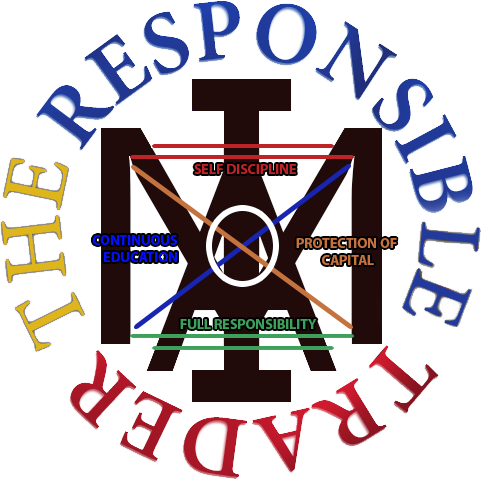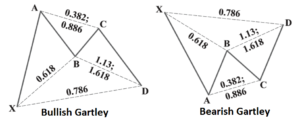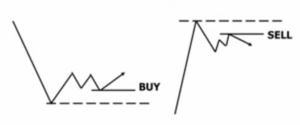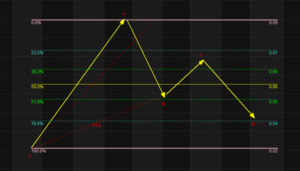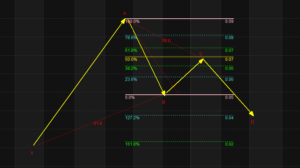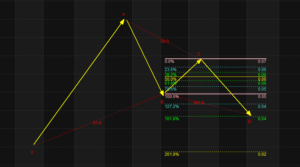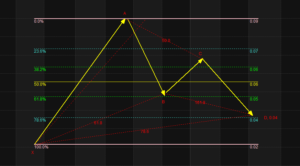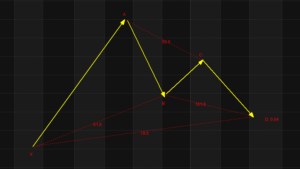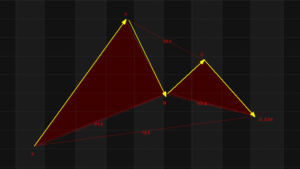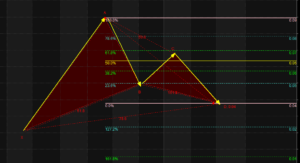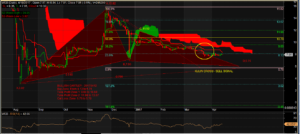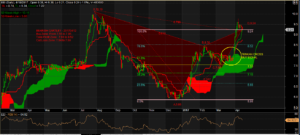TRT ICHI-MONICS – THE GARTLEY PATTERN
THE GARTLEY PATTERN
NOTE: Images taken from the books on Harmonic Trading by Scott Carney
The Gartley Pattern is also called the Gartley 222. The term originated from the fact that the Pattern first appeared in H.M. Gartley’s book, Profits in the Stock Market, and you guessed it right, it is on page 222.
The Pattern as it appeared on the book looked like this.
The Pattern has gone through many refinements and now appear like the figures you see above.
You will observe that the AB = CD Pattern, the Lightning Bolt Pattern, is present in both the Bullish and the Bearish Gartley. The only difference is the additon of an XA leg to the Pattern.
In the last lesson, we learned about the 61.8% or 0.618 Retracement. This Retracement is a MUST (it is mandatory) in the Gartley Pattern. Let us draw the Pattern step-by-step. This one is for a Bullish Gartley.
1. Draw a Fibonacci Retracement Grid starting from point X to point A to get where point B retraced. In this case it is at 61.8% or 0.618.
2. Draw a Fibonacci Retracement Grid starting from point A to point B to get where point C retraced. In this case it 50.0% so it is within the range of 38.2% to 88.6%.
3. Project BC by drawing a Fibonacci Extension from C to B using C as Point of Origin and Point of Termination. From the Bullish Gartley image this can be from 113.0% or 161.8%. We see 0.04 where 161.8% is. We mark this as our tentative point D or PRZ.
4. The next step is to draw the Constraint which is a 78.6% Retracement of the XA leg. We see that this 78.6% Retracement falls also at 0.04. This constraint is the final requirement for determining where point D or the PRZ lies and it also validates our BC Projection.
5. This figure shows the Pattern with the corresponding Fibonacci measurements.
6. We now draw the Pattern by connecting the points of the two Triangles. This is the complete Gartley Pattern.
7. Just like in our AB = CD example, to make the pattern useful, we have to draw a final Fibonacci Retracement Gridline starting from Point A to Point D to establish our TRT Critical Action Zones.
To better appreciate the Pattern, let us now take examples from some stocks traded at the PSE. This is WEB, with a Bullish Gartley Pattern.
This is EEI with a Bearish Gartley Pattern.
NOTE: Sometimes some figures appear as decimals. At other times they appear as percentages. To convert decimals to percentage just move the decimal point two places to the right. For example 1.618 is expressed in percentage as 161.8%.
“TRT Ichi-Monics – The Trading Signals of Ichi Moku Kinko Hyo and the Trading Parameters of Harmonics”
NOTE: This is a trading lesson previously posted in my BooKAKA Premium. Subscribers get these lessons weekly. It is posted here so that BooKAKA Premium Subscribers can review them again and for others to see what they are missing from my posts in my BooKAKA Premium.
NOTE: Images taken from the books on Harmonic Trading by Scott Carney
Next Lesson: THE PERFECT GARTLEY
